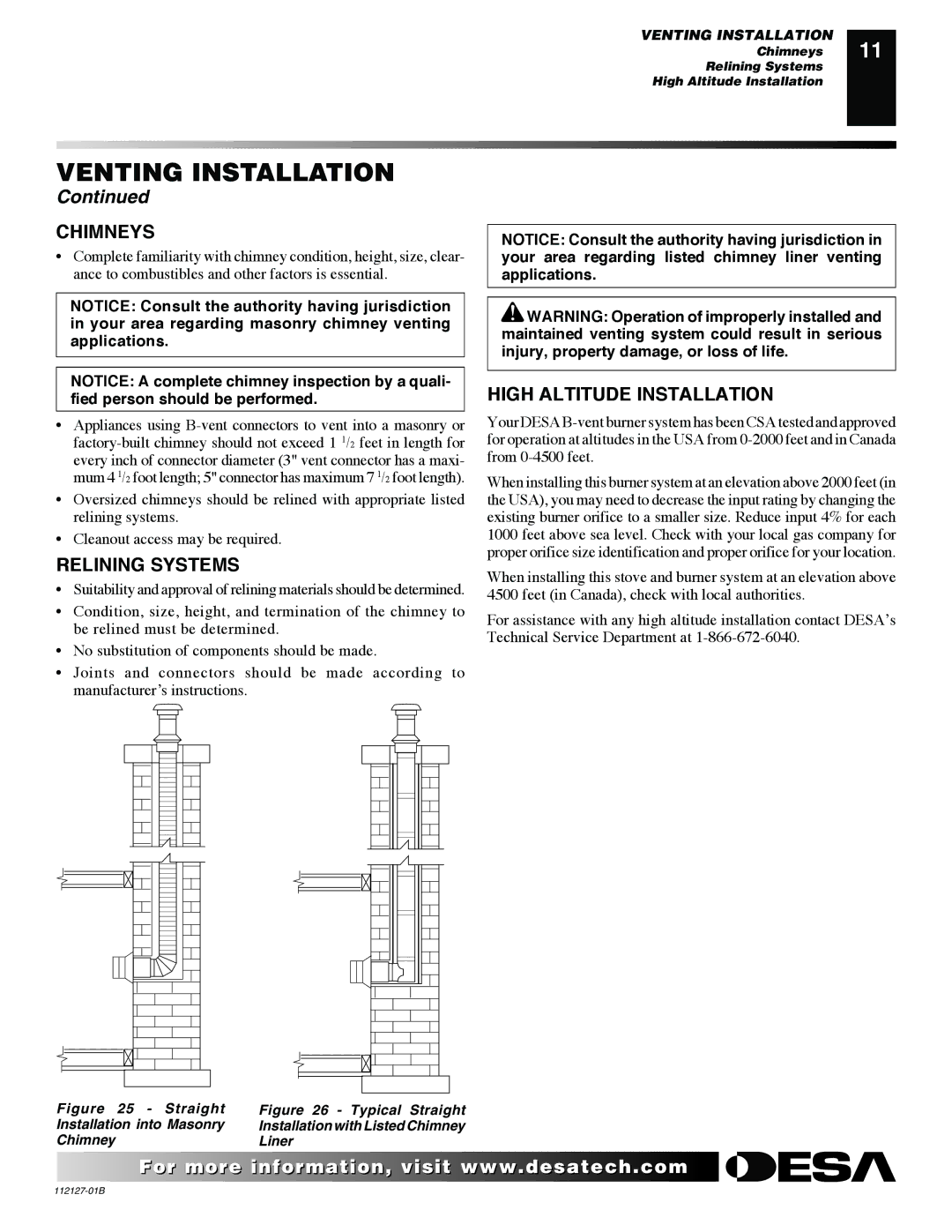
VENTING INSTALLATION
Chimneys
Relining Systems
High Altitude Installation
11
VENTING INSTALLATION
Continued
CHIMNEYS
•Complete familiarity with chimney condition, height, size, clear- ance to combustibles and other factors is essential.
NOTICE: Consult the authority having jurisdiction in your area regarding masonry chimney venting applications.
NOTICE: A complete chimney inspection by a quali- fied person should be performed.
•Appliances using
•Oversized chimneys should be relined with appropriate listed relining systems.
•Cleanout access may be required.
RELINING SYSTEMS
•Suitability and approval of relining materials should be determined.
•Condition, size, height, and termination of the chimney to be relined must be determined.
•No substitution of components should be made.
•Joints and connectors should be made according to manufacturer’s instructions.
NOTICE: Consult the authority having jurisdiction in your area regarding listed chimney liner venting applications.
![]() WARNING: Operation of improperly installed and maintained venting system could result in serious injury, property damage, or loss of life.
WARNING: Operation of improperly installed and maintained venting system could result in serious injury, property damage, or loss of life.
HIGH ALTITUDE INSTALLATION
Your DESA
When installing this burner system at an elevation above 2000 feet (in the USA), you may need to decrease the input rating by changing the existing burner orifice to a smaller size. Reduce input 4% for each 1000 feet above sea level. Check with your local gas company for proper orifice size identification and proper orifice for your location.
When installing this stove and burner system at an elevation above 4500 feet (in Canada), check with local authorities.
For assistance with any high altitude installation contact DESA’s Technical Service Department at
Figure 25 - Straight Installation into Masonry Chimney
Figure 26 - Typical Straight Installation with Listed Chimney Liner
For more![]()
![]()
![]()
![]() visit www.
visit www.![]()
![]()
![]() .com
.com![]()
![]()
![]()
![]()
![]()
